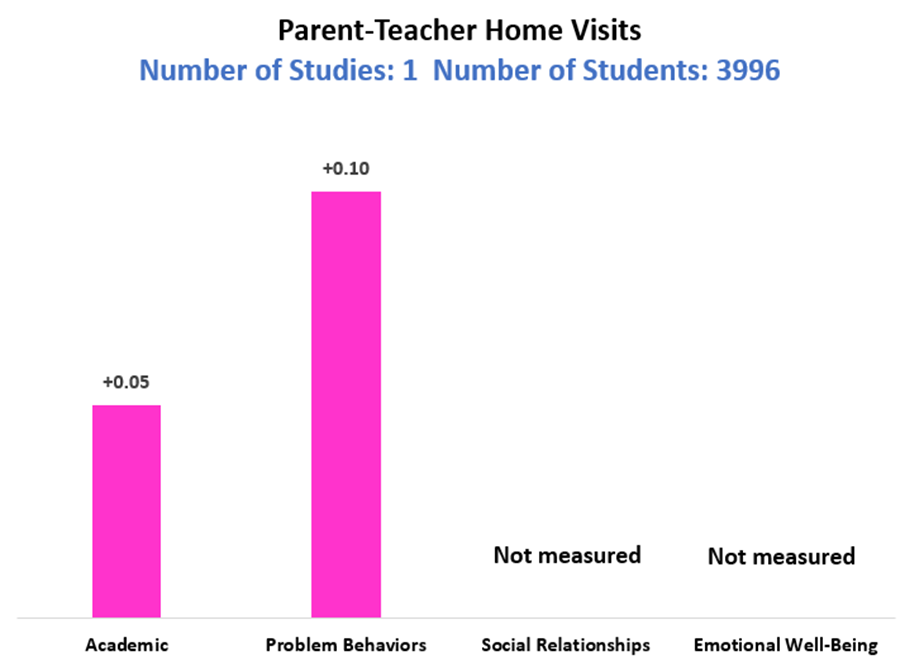
Program Description
The Parent Teacher Home Visits model was co-created by parents and educators using the community organizing principles of shared leadership. Participating teachers conduct 30-40 minute home visits in which educators listen, ask questions, and make observations that they can take back to their classrooms to improve instruction for the learner. As a two-visit model, PTHV encourages the first relationship-building visit to occur in the summer or early fall, followed by ongoing communication throughout the year and a second visit that focuses on academics or any other relevant issue to the student or family. The PTHV model has five non-negotiables:
- Visits are voluntary and arranged in advance
- Teachers are trained and compensated for visits
- Visits focus on hopes and dreams
- Educators visit a cross-section of students (not a targeted intervention)
- Educators go in pairs and reflect
Program Outcomes
A 2021 study by the Regional Education Laboratory of the Mid-Atlantic at Mathematica used a quasi-experimental study design using matched comparison group propensity scores to investigate the impacts of structured relationship-building teacher home visits conducted in grades 1–5 as part of a family engagement program in the District of Columbia Public Schools. The study found that a home visit before the start of the school year reduced the likelihood of a student having a disciplinary incident in that school year. During the school year following a home visit, 9.27 percent of visited students had a disciplinary incident compared with 12.22 percent of non-visited comparison students (effect size = +0.10), qualifying the program for a Promising rating in the Problem Behaviors category. Although the home visit did not result in any significant differences on ELA scores (effect size = +0.03), it did impact math scores on standardized tests (+0.11), as well as show improvement in student attendance (effect size =+0.02), earning a Promising rating in the Academic category.
Staffing Requirements
No additional staffing required.
Professional Development/Training
None required.
Technology
None required.
